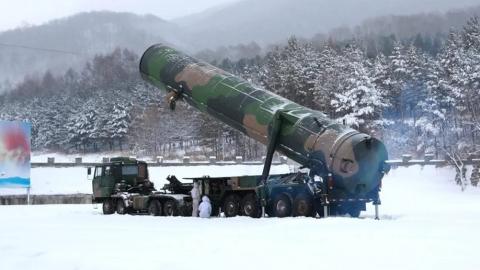The Chinese surveillance balloon shot down by the US Air Force on February 4 traveled over a US intercontinental ballistic missile (ICBM) base and one bomber base, collecting information about US nuclear facilities. Some commentary states that the United States took countermeasures to prevent the transmission of data back to China, meaning that the violation of US airspace and sovereignty was “not a major breach” of US security. Yet others, including Senators Steve Daines and John Tester and Representative Matt Rosendale, believe the Chinese balloon incursion was a serious problem and need to be prevented in the future.
What information China was able to gather with a balloon that it could not obtain through satellite surveillance is unclear, but other important questions need to be answered. What is the Chinese purpose in the strategic realm? What does this mean for China’s modernization and expansion of its nuclear arsenal?
The collection of weather information about a US Minuteman III missile field would tell the Chinese Communist Party (CCP) how its warheads might fare in seeking to destroy US missiles, a point made by a very detailed assessment in 1984.
An additional study eleven years ago discovered the Chinese build of tunnel-based mobile railroad launchers for their land-based ICBMs. The range of the DF-31 ICBM is estimated at 7,000-11,000 kilometers, meaning it can hit anywhere in the United States, including Malmstrom, F.E. Warren, and Minot Air Force Bases. 400 American ICBM missiles are deployed at these three American missile bases, and China’s nuclear buildup is allowing Beijing to hold the entire US ICBM force at risk.
Especially with China’s construction of 360 additional ICBM launchers or silos in western China, the CCP’s objective is becoming clearer. These silos can contain DF-41 ICBMs that carry up to ten warheads each, with a 12,000-kilometer range. Despite doubts to the contrary, China’s expanded fissile material production capabilities are now confirmed by US intelligence assessments. The People’s Republic of China (PRC) can turn out nuclear warheads like sausages, building up to at least 1,500 warheads by 2030-35, according to recent US intelligence reports. This “breathtaking” buildup, as described by the recently retired commander of US Strategic Command, Admiral Charles Richard, is dramatically changing the security environment that the United States is operating in.
Indeed, on February 7, US Strategic Command notified the US Congress, as required by law, that China now has more ICBM launchers than the United States. This should concern Americans, especially given rising US-China tensions over Taiwan and Beijing’s acknowledgement that its “no first use” policy does not apply to the island. Look no further than the statement from Chinese state media that threatened to use nuclear weapons against Japan, and “again demand their unconditional surrender” as occurred in World War II, if Tokyo decided to come to the defense of Taiwan.
With no-first-use jettisoned, US assessments of Chinese nuclear strategy might begin to include the idea that up to 360 DF-31 or DF-41 missiles in those 360 silos could very well unleash multiple thousands of warheads in a potential first strike against the United States. Such a threatened attack, in China’s mind, could ensure the United States stands down in the case of PRC aggression against Taiwan.
The Chinese balloon entered US airspace undeterred. If one is not concerned with multiple thousands of Chinese warheads holding at risk US military capabilities and major American cities, one might contemplate Mike Pillsbury’s testimony before the US-China Security Review Commission that warned China could use electromagnetic pulse weapons (EMP) against the United States electrical grid with catastrophic results. And what is a very efficient and surreptitious method of bringing an EMP weapon over America’s heartland? As the late EMP expert Dr. Peter Pry explained numerous times, a key means of delivering such a weapon would be a balloon.














